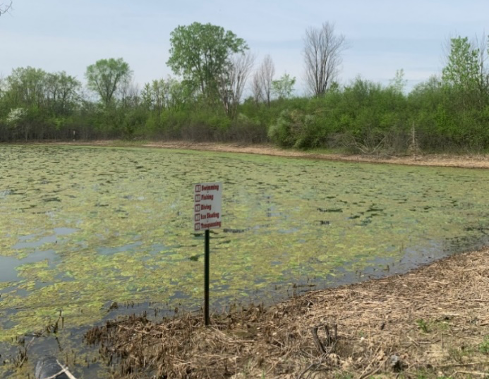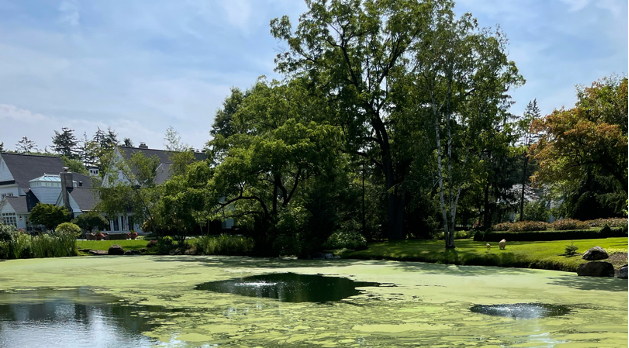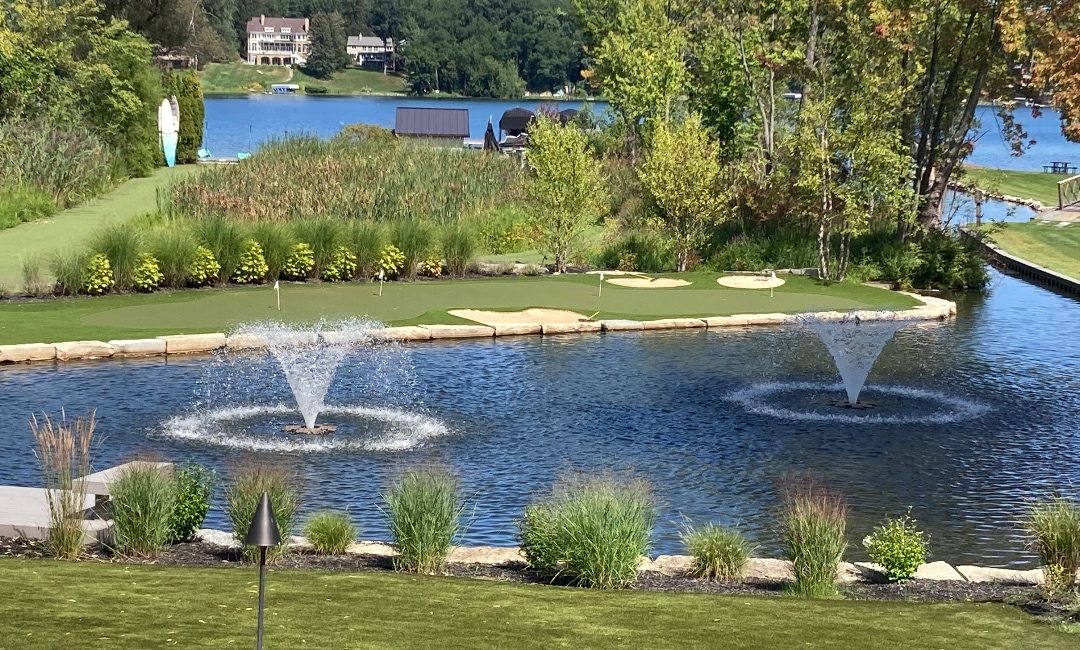Before Treatment This pond has a catastrophic filamentous algae bloom, as can be seen by the 100% surface coverage. Multiple inlets bringing in nutrients increased eutrophication of this pond, leading to a large unsightly algal bloom. A large amount of biomass from...



